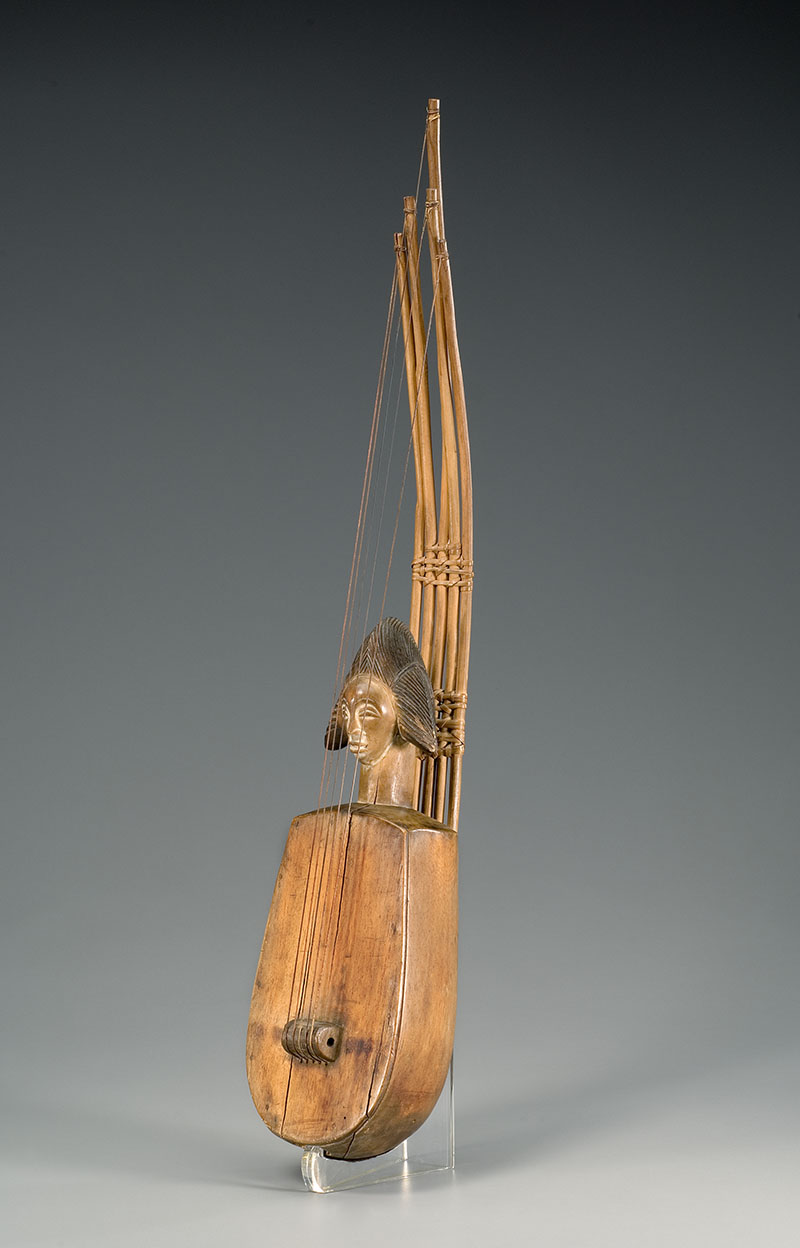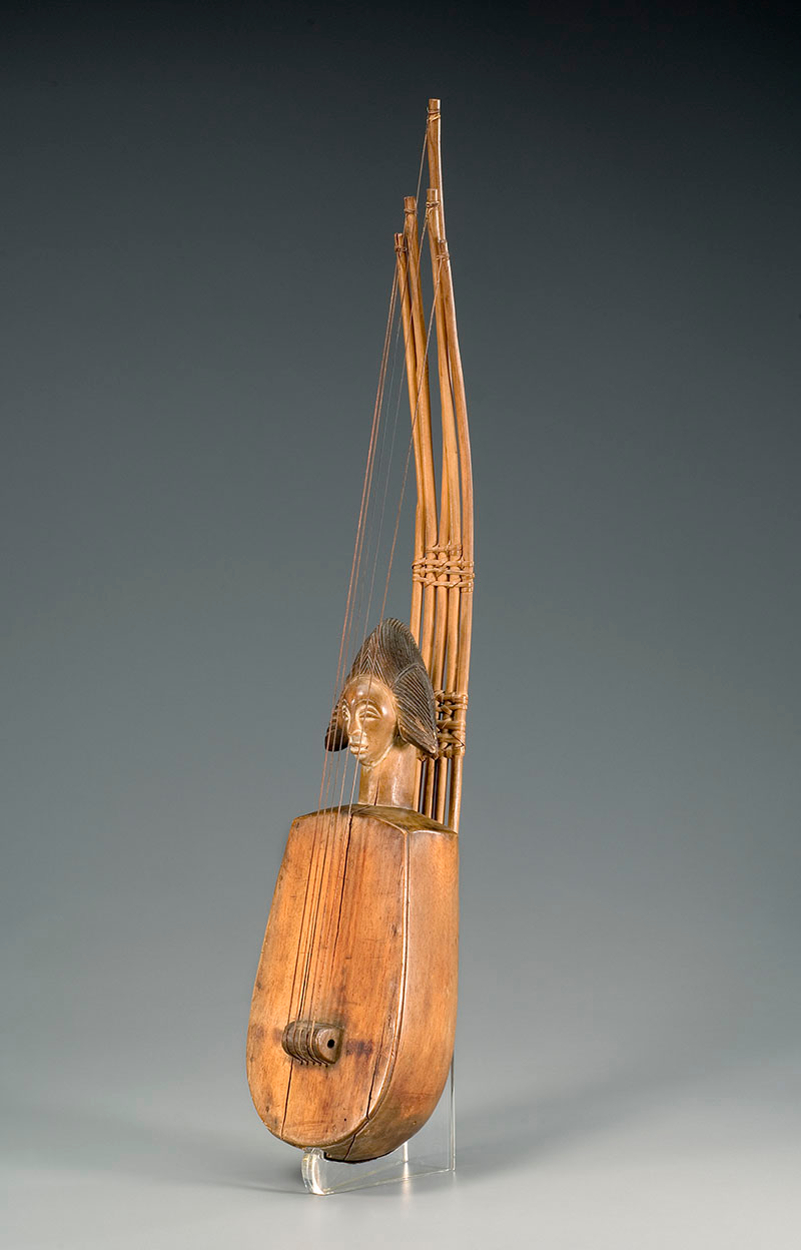For the next three Mondays, we are honored to feature pieces from a collection of Indiana University Art Museum. Today, we share with you something special - a musical instrument. This has never happened on DailyArt before. I hope you will like it!
Unlike many African musical instruments which are often relatively rough in finish, this one epitomizes refinement, with grace and delicacy, that is unsurpassed in its genre. Body of the instrument and willowy sticks to which strings are attached are smooth showing no traces of carving tools. Most eye-catching, though, is the exquisitely carved head that features a serene face and an elegant coiffure that are similar to masks from the region. Like the masks, this face has delicate features that depict an idealized female beauty: a rounded forehead, arched brows, coffee-bean-shaped eyes, a small nose, full lips, and a small, pointed chin. A face color analysis shows traces of kaolin, a fine, white clay used as a pigment for face masks throughout sub-Saharan Africa. The white-faced masks of the area were originally associated with funerary celebrations; they were considered to embody spirits of the dead. We do not know whether the head on this instrument has significance beyond adding to the instrument’s beauty, value (skillful carving most certainly would have come with increased cost), and, by extension, prestige. Often called a harp, this instrument is actually a pluriarc or a bow lute.
Unique to Africa, the pluriarc is distinguished by the presence of multiple necks attached to a single body. Each neck holds a single string. Varying lengths and curvatures of the necks allow the strings to create different tones when they are plucked, but flexibility of the necks makes the instrument difficult to keep in tune. In Gabon, harps and similar instruments are traditionally played at ceremonies held by societies and cults dedicated to esoteric learning and healing.


 Punu or Lumbo peoples (?), Ngounié River area, Gabon
Punu or Lumbo peoples (?), Ngounié River area, Gabon